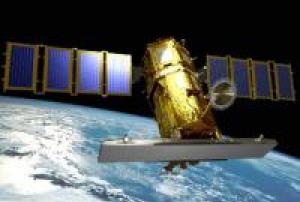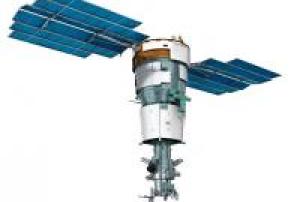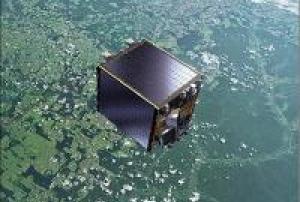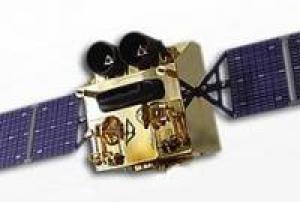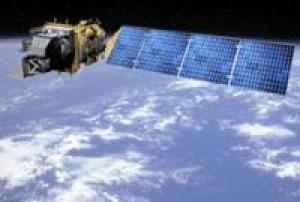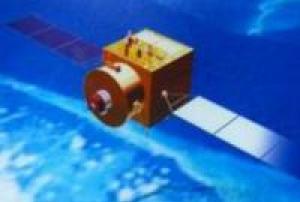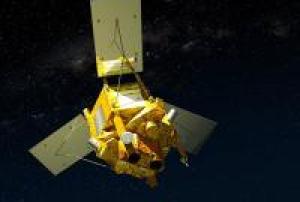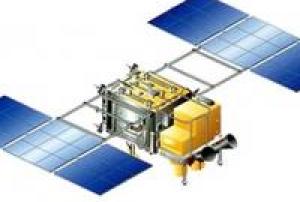Incendio
Definition
Facts and figures
Further information
UN-SPIDER Regional Support Offices with hazard-specific expertise
Related content on the Knowledge Portal
KOMPSAT-5 is an earth observation satellite equipped with Korea's first all-weather SAR.
The SAR mounted on KOMPSAT-5 emits microwaves to an object on the ground and synthesizes the reflected signal to produce an image. It enables ground observation even during nighttime and poor weather conditions.
As the SAR image can supplement the optical camera, which can record only the visible light spectrum, it is utilized in mutual supplementary operations with the high-resolution optical images of KOMPSAT-3 and KOMPSAT-3A.
KOMPSAT-5 observes the Korean Peninsula four times a day. The transmitted image data are used for public safety, natural disaster forecasts, land/resource management and environmental monitoring.The primary mission of the KOMPSAT-5 system is to provide high resolution mode SAR images of 1 meter resolution, standard mode SAR images of 3 meter resolution and wide swath mode SAR images of 20 meter resolution with viewing conditions...
read more22/08/2013Resurs-P1 is a Russian Earth observation satellite designed and developed at TsSKB Progress (Progress State Research and Production Space Center) in Samara, Russia. Roskosmos is funding the project (owner and operator of the spacecraft under the Russian Federal Space Program), the commercial data distributor is Sovzond JSC of Moscow. The spacecraft is operated by NTs OMZ (Research Center for Operational Earth Monitoring), Moscow, Russia.
Resurs-P1 is meant to replace the Resurs-DK, a previous generation spacecraft, which was launched on June 15, 2006.
Resurs-P carries the Geoton-L1 hyperspectral imaging payload as the main imaging instrumet. The optics have an apperture of 0.5 m and provides images with a ground resolution of 1.0 m in panchromatic mode and a resolution of 3 to 4 m in color mode. The Geoton-L1 system has 7 passbands and a 216-channel hyperspectral imager.
Aditionallym the KShMSA wide field...
read more25/06/2013The Proba-V satellite may only be slightly larger than a washing machine, but it is tasked with a full-scale mission. This miniature satellite is designed to map land cover and vegetation growth across the entire globe every two days. Over the last decade 'Proba' has become synonymous with small high-performance satellites, designed around innovation. The two previous satellites in the series were demonstration missions to give promising technologies an early chance to fly in space. They were overseen by ESA’s Directorate of Technical and Quality Management. Although designed as a demonstration mission, the success of the first Proba satellite led to it being operated as an Earth observation Third Party Mission. Proba-1 carries a high-resolution imaging spectrometer.
... read more07/05/2013Gaofen-1 (gao fen = high resolution) is the first of a series of high-resolution optical Earth observation satellites of CNSA (China National Space Administration), Beijing, China. The civilian HDEOS (High-Definition Earth Observation Satellite) program was proposed in 2006, it received government approval and was initiated in 2010. China plans to launch six HDEOS spacecraft between 2013 and 2016. The major users of the observation data will be the Ministry of Land and Resources, Ministry of Environmental Protection, and the Ministry of Agriculture.
The GF-1 spacecraft was launched on April 26, 2013 on a CZ-2D (Long March -2D) vehicle from the JSLC (Jiuquan Satellite Launch Center) in northwest China.Instruments:
read more
PMC (PAN and Multispectral camera)
WFI (Wide Field Imager)26/04/2013Landsat 8 launched on February 11, 2013, from Vandenberg Air Force Base, California, on an Atlas-V 401 rocket, with the extended payload fairing (EPF) from United Launch Alliance, LLC. The Landsat 8 satellite payload consists of two science instruments—the Operational Land Imager (OLI) and the Thermal Infrared Sensor (TIRS). These two sensors provide seasonal coverage of the global landmass at a spatial resolution of 30 meters (visible, NIR, SWIR); 100 meters (thermal); and 15 meters (panchromatic).
read more
Landsat 8 was developed as a collaboration between NASA and the U.S. Geological Survey (USGS). NASA led the design, construction, launch, and on-orbit calibration phases, during which time the satellite was called the Landsat Data Continuity Mission (LDCM). On May 30, 2013, USGS took over routine operations and the satellite became Landsat 8. USGS leads post-launch calibration activities, satellite operations, data product generation, and data archiving at the Earth...11/02/2013Launched in December 2011, Pleiades is a constellation of two very-high-resolution satellites capable of acquiring imagery of any point on the globe in under 24 hours for civil and military users.
read more
Pleiades has been observing and mapping Earth’s surface at a resolution of just 70 cm every day since December 2011. Comprising the Pleiades 1A and Pleiades 1B satellites, this space imaging system complements the capabilities of the SPOT satellites, which have a wider field of view than Pleiades but lower spatial resolution. What’s more, as Pleiades 1A and 1B are in the same orbit, together they can image anywhere on Earth in less than 24 hours. Pleiades imagery is used for both civil and military applications, for example to track urban expansion, monitor the planet’s active volcanoes or assist road and railway routing, and to locate adversaries’ military installations for mission planning. Pleiades’ key asset is an extremely sensitive optical...01/12/2012SJ-9 (Shi Jian = Practice) is a technology demonstration formation flight mission of CNSA (China National Space Administration), consisting of two minisatellites of different sizes and capabilities, SJ-9A and SJ-9B. The overall mission concept is to demonstrate the functionality of a range of newly developed formation flying techniques and components and to validate the formation flight GNC (Guidance, Navigation and Control) algorithms and strategies of the system configuration.
SJ 9A is based on the CAST-2000 bus. It conducts in-orbit experiments for electric propulsion, high-precision- and high-stability control systems, high-efficienent power supply and advanced thermal control technology. The satellite features also instruments for Earth observation and component tests of indigenously developed technology.Instruments: High-performance small camera
read more
- integrated panchromatic and multispectral design
- swath width: 30km
-...14/10/2012VRSS-1 is Venezuela's first remote sensing satellite.
read more
On May 26, 2011, a contract for the manufacture and launch of the VRSS-1 spacecraft was signed in Caracas, Venezuela, between the government of Venezuela (the Ministry of People’s Power for Science, Technology and Intermediate Industries) and CGWIC (China Great Wall Industry Corporation), a subsidiary of CASC (China Aerospace Science & Technology Corporation).
After launch, the VRSS-1 satellite was renamed in honor of Sebastián Francisco de Miranda (1750-1816), a Venezuelan revolutionary hero, known as ‘Generalissimo’ Francisco de Miranda, who had planned the independence of the Spanish colonies in South America.
Partner organizations in the VRSS-1 program: ABAE is the Space Agency of Venezuela, subordinated and funded by the Venezuelan Ministry of People’s Power for Science, Technology and Innovation (MPPCTI). ABAE is in charge of in-orbit operations, management and application of...20/09/2012SPOT-6 (Système Pour l’Observation de la Terre) is an optical satellite built by Astrium and was successfully launched on September 9, 2012 with SPOT 7 launched on June 30, 2014.
read more
The new generation SPOT-6 and 7 optical satellites feature technological improvements and advanced system performance allowing continuity in the SPOT constellation through to 2024. It is capable of imaging the Earth with a resolution of 1.5 meter panchromatic and 6 meter multispectral (blue, green, red, near-IR) and will offer imaging products to customers in defense, agriculture, deforestation, environmental monitoring, coastal surveillance, engineering, oil, gas and mining industries.
The ability to respond accordingly to changing weather conditions, a reduced timeline for urgent tasking requests and an acquisition capacity of 3 million sq km per satellite shows an increased data capacity and simplified data access, major improvements in this generation of SPOT satellites.
SPOT-6 and...09/09/2012Kanopus-V (also spelling of Canopus-V N1) is an Earth observation minisatellite mission of the Russian Space Agency, Roskosmos and ROSHYDROMET/Planeta. The overall objective is to monitor Earth's surface, the atmosphere, ionosphere, and magnetosphere to detect and study the probability of strong earthquake occurrence.
Essentially, it would be an imaging satellite designed to photograph the Earth surface with a resolution of 2.1 meters and a swath of 20 kilometers with its panchromatic camera and a resolution of 10.5 meters and a swath of 41 kilometers with a multispectral camera. Resulting images could be used for cartography, agricultural planning and similar applications.The Kanopus-V-N1 spacecraft was launched on July 22, 2012 on a Soyuz FG/Fregat vehicle from the Baikonur Cosmodrome, Kazakhstan. The launch provider was Starsem.
Instruments:
read more
PSS (Panchromatic Imaging System)
MSS (Multispectral Imaging System)
MSU-200 (...22/07/2012

